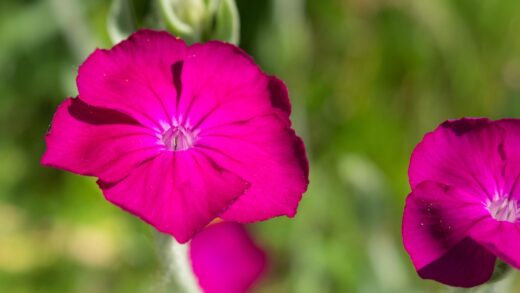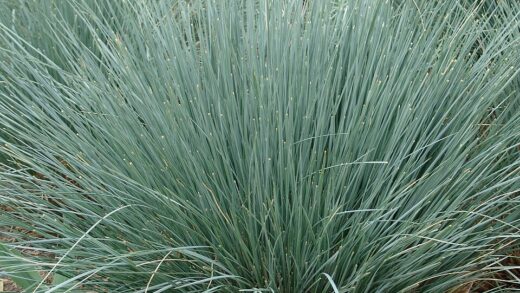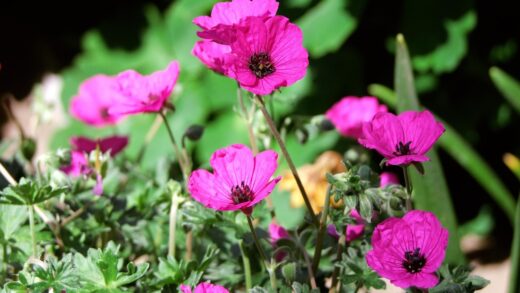Caring for garlic is a rewarding process that extends from the moment the cloves are planted until the robust bulbs are harvested and cured. It involves a holistic approach, considering everything from the soil’s health to the subtle cues the plant gives throughout its growth cycle. Proper care ensures not only a bountiful harvest but also enhances the flavour and storage potential of the bulbs. This comprehensive guide delves into the essential practices required to cultivate exceptional garlic, transforming a simple planting into a successful agricultural endeavour. It is a journey of observation and timely intervention, rewarding the attentive grower with pungent, healthy bulbs.
The foundation of garlic care begins long before the first green shoot emerges, starting with meticulous soil preparation and thoughtful planting. The soil must be loose and well-draining to prevent waterlogging, which can lead to rot and disease. A sandy loam or silt loam is ideal, but clay soils can be improved with generous additions of compost and other organic matter to improve their structure. Proper spacing during planting is also a critical aspect of care; giving each plant enough room ensures adequate air circulation and access to sunlight, which are vital for preventing fungal diseases and promoting vigorous growth. This initial setup dictates the health of the plant for its entire lifecycle, making it a non-negotiable first step.
As the garlic begins to grow, consistent and appropriate watering becomes a primary focus of its care regimen. Garlic requires steady moisture, especially during the crucial period of bulb formation, but it is highly susceptible to problems arising from overwatering. The key is to keep the soil moist but not saturated, allowing the top inch or two of soil to dry out between waterings. Monitoring soil moisture levels, either with a moisture meter or by hand, is far more effective than adhering to a rigid schedule. As harvest time approaches, reducing the amount of water is essential, as this helps the bulbs to cure and develop the dry, papery skins necessary for long-term storage.
Weed control is another continuous task in the proper care of a garlic crop, as weeds compete fiercely for water, nutrients, and sunlight. A thick layer of organic mulch, such as straw, shredded leaves, or grass clippings, is an excellent strategy for suppressing weeds. Mulch also provides the added benefits of conserving soil moisture and regulating soil temperature, protecting the roots from both extreme heat and cold. For any weeds that do manage to penetrate the mulch, regular hand-pulling is the most effective and safest method of removal, as hoeing can easily damage the shallow roots of the garlic plants.
Soil and site selection
Selecting the perfect site is the cornerstone of successful garlic cultivation and a primary step in its overall care. Garlic thrives in locations that receive full sun, requiring at least six to eight hours of direct sunlight per day to develop large, dense bulbs. Insufficient light will result in smaller bulbs and weaker plants, so choosing an open area away from the shade of buildings or large trees is paramount. The history of the planting site is also important; it is crucial to practice crop rotation and avoid planting garlic where other Allium species (like onions or leeks) have grown in the past few years to prevent the buildup of soil-borne diseases.
More articles on this topic
The soil itself is arguably the most critical factor, and its composition must be carefully considered. Garlic demands a fertile, well-draining soil with a loamy texture that allows its roots to expand without restriction. Heavy clay soils are problematic as they retain too much moisture and can become compacted, hindering bulb development and promoting rot. To remedy this, incorporating several inches of well-rotted compost, aged manure, or peat moss can dramatically improve soil structure, aeration, and drainage. This amendment process should be done thoroughly, working the organic matter into the top six to eight inches of the soil.
Furthermore, the soil’s pH level plays a significant role in the garlic plant’s ability to absorb nutrients. The ideal pH range for garlic is between 6.0 and 7.0, which is slightly acidic to neutral. Conducting a soil test before planting is a wise investment, as it provides precise information about the current pH and nutrient levels. If the soil is too acidic, lime can be added to raise the pH, whereas sulfur can be used to lower an overly alkaline pH. Balancing the pH ensures that essential nutrients are available to the plant throughout its growth cycle.
Finally, ensuring the site is free of persistent weeds and has a fine tilth is the last step in preparation. Tilling or broadforking the area helps to loosen the soil deeply and remove any existing weed roots or large stones that could obstruct bulb growth. A well-prepared bed provides a clean and hospitable environment for the garlic cloves to establish a strong root system quickly. This initial investment of time and effort in site and soil preparation pays significant dividends in the form of healthier plants and a more substantial harvest.
Watering and moisture management
Effective moisture management is a delicate balance, as garlic has specific watering needs that change throughout its development. During the initial stages of root and shoot development in the autumn and early spring, consistent moisture is vital to establish a robust plant. The soil should be kept evenly moist, similar to a wrung-out sponge, to support this foundational growth. However, it is equally important to avoid creating waterlogged conditions, which can suffocate the roots and create an anaerobic environment ripe for fungal pathogens. Therefore, watering should be deep and infrequent rather than shallow and frequent, encouraging the roots to grow deeper into the soil profile.
More articles on this topic
As the season progresses into late spring and early summer, the focus of the plant’s energy shifts to bulb development, and this is when water requirements are at their peak. During this bulbing phase, a lack of sufficient moisture can lead to significantly smaller bulbs and reduced overall yield. It is crucial to ensure the plants receive approximately one inch of water per week, either from rainfall or supplemental irrigation. The best method is to use drip irrigation or soaker hoses, which deliver water directly to the root zone, minimizing water loss through evaporation and keeping the foliage dry to prevent disease.
A critical transition in the watering schedule occurs approximately two to four weeks before the anticipated harvest date. At this point, it is essential to cease all supplemental irrigation and allow the soil to begin drying out. This dry-down period is not an act of neglect but a crucial step in the curing process that begins while the plant is still in the ground. It signals the bulb to mature and helps to develop the tight, papery wrappers that protect it in storage, significantly reducing the risk of post-harvest rot and extending its shelf life.
Monitoring is the key to successful moisture management, as weather conditions can vary dramatically. Factors such as temperature, humidity, wind, and soil type all influence how quickly the soil dries out. Rather than sticking to a rigid calendar, a grower should regularly check the soil moisture at a depth of a few inches. A simple hand test is often sufficient; if the soil feels dry at that depth, it is time to water. This responsive and observant approach to irrigation ensures the garlic receives exactly what it needs at each critical stage of its growth.
Nutrient and feeding strategy
Garlic is a heavy feeder, particularly with respect to nitrogen, and requires a well-thought-out nutrient strategy to reach its full potential. The majority of its nutrient needs should be met by enriching the soil before planting. Incorporating a balanced, slow-release organic fertilizer or a generous amount of high-quality compost into the planting bed provides a foundational supply of nutrients that the garlic can draw upon throughout its long growing season. This initial fertilization is critical because it supports the robust root and foliage development that occurs during the autumn and winter months, which in turn fuels later bulb growth.
As the garlic emerges from winter dormancy and begins its phase of rapid vegetative growth in the spring, supplemental feeding becomes necessary. This is when the plant’s demand for nitrogen is at its highest, as nitrogen is a key component of chlorophyll and is essential for lush, green leaf development. Applying a nitrogen-rich fertilizer, such as blood meal, feather meal, or a balanced liquid feed like fish emulsion, can provide a significant boost. These applications, often called side-dressing or top-dressing, should begin once the shoots are about six inches tall and continue every three to four weeks until the scapes begin to form on hardneck varieties.
It is crucial to adjust the feeding strategy as the season progresses. Once the bulbing process begins, typically in early to mid-summer, the plant’s primary need shifts from nitrogen to phosphorus and potassium. Nitrogen applications should cease at this point, as excessive nitrogen during bulb development can promote continued leaf growth at the expense of bulb size and may also result in softer bulbs with poor storage quality. Phosphorus is vital for root development and energy transfer, while potassium plays a key role in bulb formation and overall plant health, including disease resistance.
For an organic approach, ensuring the soil is rich in organic matter is the best long-term strategy for providing a balanced diet for garlic. Compost and well-rotted manure not only supply a wide range of macro and micronutrients but also improve the soil’s structure and its ability to hold onto those nutrients, making them available to the plant over time. A healthy, biologically active soil will contain a thriving population of microorganisms that help to break down organic matter and unlock nutrients for the plant’s roots. This holistic approach to soil fertility management leads to healthier plants and superior bulbs.
Weed and pest management
Proactive weed management is a non-negotiable aspect of garlic care, as unchecked weed growth can severely impact the final yield. Weeds are aggressive competitors for essential resources, including water, nutrients, and sunlight, and their presence can stress the garlic plants, making them more susceptible to pests and diseases. The most effective strategy begins with a clean, weed-free bed at the time of planting and is maintained throughout the growing season. Because garlic has a shallow root system, deep cultivation or aggressive hoeing can cause significant damage, making preventative measures the preferred course of action.
Mulching stands out as the single most effective technique for weed control in garlic cultivation. Applying a thick layer of organic mulch, such as clean straw, shredded leaves, or grass clippings, immediately after planting creates a physical barrier that prevents most weed seeds from germinating. This mulch layer should be several inches deep to be effective and will need to be replenished as it decomposes over time. In addition to suppressing weeds, mulch helps to conserve soil moisture, regulate soil temperature, and adds valuable organic matter to the soil as it breaks down, further benefiting the crop.
Despite the best preventative measures, some weeds will inevitably appear, and these should be dealt with promptly before they can establish themselves. Hand-pulling is the safest method for removing weeds that emerge close to the garlic plants, ensuring that the garlic’s delicate roots are not disturbed. For weeds that appear in the pathways between rows, a sharp hoe can be used carefully, scraping just the surface of the soil to cut the weeds off at their base. Regular, weekly patrols of the garlic patch make this task manageable and prevent any single weed from going to seed and creating a larger problem for the future.
While garlic is naturally resistant to many common garden pests due to its sulfurous compounds, a few specific pests can still cause issues. The most significant threats include onion thrips, which can damage the leaves and reduce photosynthetic capacity, and the onion maggot, which tunnels into the base of the plant and the bulb itself. Monitoring for these pests is key, and management often involves cultural practices like crop rotation and maintaining good garden sanitation. In cases of severe infestation, insecticidal soaps or neem oil can be effective, but fostering a healthy population of beneficial insects, such as ladybugs and lacewings, provides a more sustainable, long-term solution for pest control.
Harvesting and curing
Knowing the precise time to harvest is a critical skill in garlic cultivation, as harvesting too early results in small, underdeveloped bulbs, while waiting too long can cause the bulbs to split open and lose their storage quality. The primary indicator for harvest readiness is the plant’s foliage. As the bulbs mature, the lower leaves will begin to turn yellow and brown, starting from the bottom of the plant and progressing upwards. The general rule of thumb is to wait until about one-third to one-half of the leaves have browned and dried before pulling the bulbs from the ground.
The harvesting process itself should be done with care to avoid bruising or damaging the bulbs. It is best to loosen the soil around the plants with a garden fork or a small spade before gently lifting them from the ground. Pulling the plants out by their stems can cause the neck to separate from the bulb, which compromises its ability to be cured and stored properly. Once lifted, the plants should not be washed; instead, gently brush off any excess soil, being careful not to remove the outer papery skins, and keep the leaves and roots intact for the curing process.
Curing is perhaps the most crucial post-harvest step, as it is essential for developing the garlic’s full flavour and ensuring a long shelf life. The harvested garlic plants should be moved to a warm, dry, and well-ventilated location, such as a covered porch, a barn, or a shed, away from direct sunlight. The plants can be bundled together in small bunches and hung from rafters or spread out in a single layer on wire racks or screens. Proper air circulation all around the bulbs is paramount to prevent mold and ensure even drying.
The curing process typically takes anywhere from two to four weeks, depending on the humidity and temperature of the curing environment. You will know the garlic is fully cured when the outer wrappers are dry and papery, the neck is constricted and hard, and the roots are completely dry and brittle. At this point, the tops and roots can be trimmed off, and the outer, dirty layers of skin can be gently removed to reveal a clean bulb. The cured garlic is now ready for storage and will keep for many months in a cool, dark, and dry place with good air circulation.


















